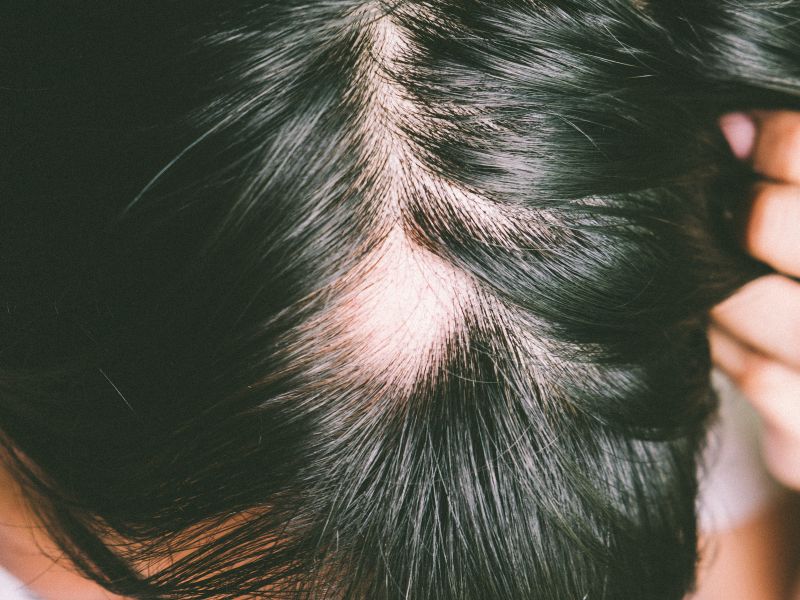Alopecia Areata
Alopecia areata is an autoimmune disease where the body attacks its own hair follicles resulting in patches of hair loss. It can occur anywhere on the body. The hair may grow back on its own, however, in some cases if the disease is left untreated it can progress to alopecia universalis i.e., loss of hair from all over the body.

What are the causes of alopecia areata?
The exact cause of alopecia areata is not fully understood, but it is believed to be a result of a combination of genetic and environmental factors. It occurs when the body’s immune system mistakenly attacks the hair follicles, leading to their shrinkage and subsequent hair loss. Triggers such as stress, viral or bacterial infections, hormonal imbalances, and certain medications can also play a role in triggering or exacerbating the condition. Understanding the causes of alopecia areata is an important step in developing effective treatments to manage this condition.
Can alopecia areata be cured?
Alopecia areata cannot be cured, however, it is possible to regrow the hair. The autoimmune attack in alopecia areata which leads to hair loss seldom results in permanent damage to the hair follicles resulting in a possibility of hair regrowth. The extent of hair loss plays a significant role in determining the likelihood of natural hair regrowth.

What are the treatment options for alopecia areata?
Treatment options for alopecia areata depend on various factors, including the duration of the condition and its specific manifestations. Individuals recently diagnosed with alopecia areata, particularly those experiencing hair loss for less than a year, can be advised a wait-and-see approach. In some cases, spontaneous hair regrowth may occur without the need for treatment.
For localized cases with only 1 or 2 patches, topical medications can be effective in promoting hair regrowth. However, if the patches continue to spread, injections of corticosteroids can be used. These are intralesional injections administered directly into the patches to stimulate hair growth, provided that the cause of hair loss is not due to an infection. In such cases, it is crucial to first treat the underlying infection before seeking assistance to regain lost hair. Immunosuppressants drugs can also be used to modulate the immune system.
Additionally, if hair loss is attributed to the compulsive habit of hair plucking known as Trichotillomania, a collaborative approach involving a psychiatrist and dermatologist is necessary. The psychiatrist will address the underlying stress-related issues, while the dermatologist will prescribe suitable medications to facilitate hair regrowth.
If alopecia areata affects the eyebrows, we provide an additional solution in the form of semi-permanent eyebrow tattooing. This specialized technique helps create natural-looking eyebrows for individuals with eyebrow-related alopecia areata. It offers a long-lasting solution to enhance the appearance and symmetry of the eyebrows.
Our Results



Ready to get started?
Take the first step towards managing and treating alopecia by booking your consultation today.